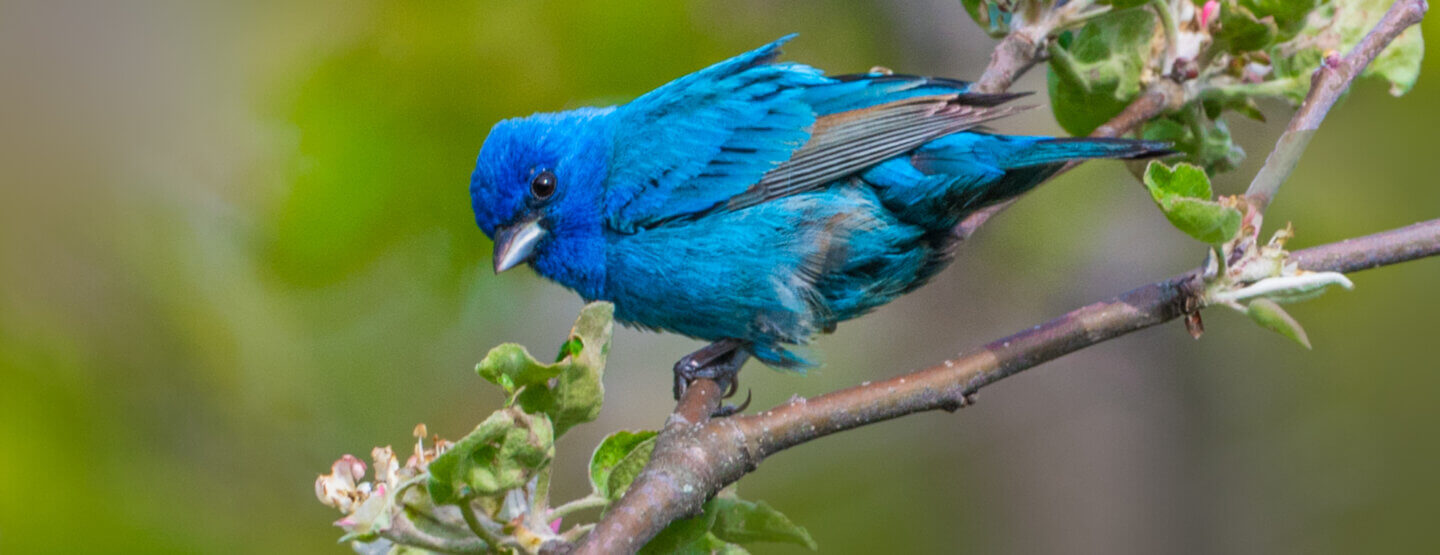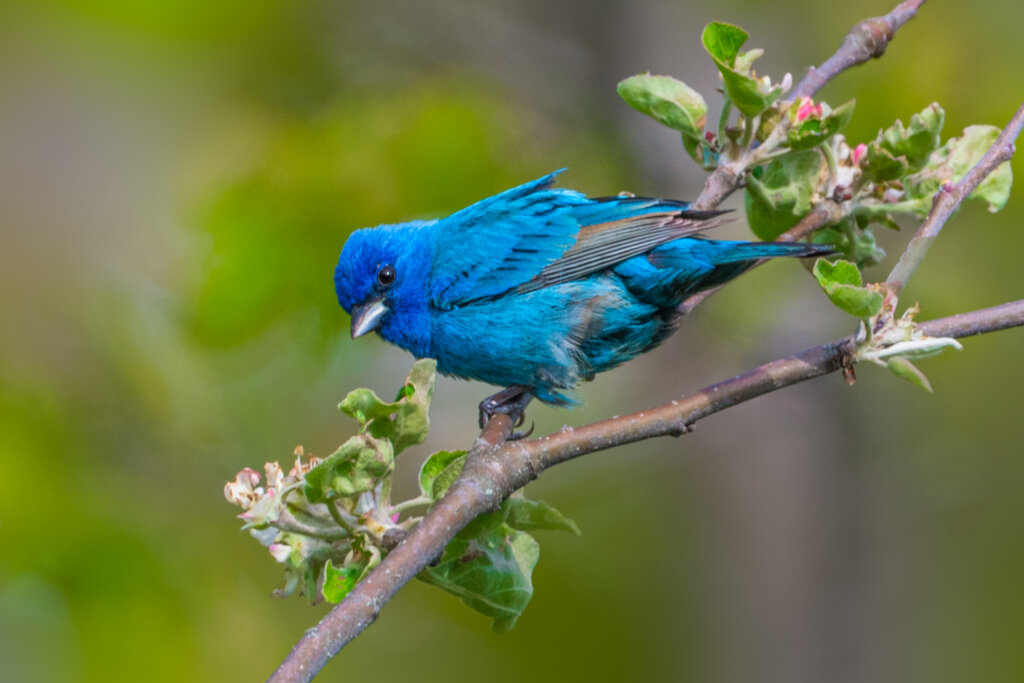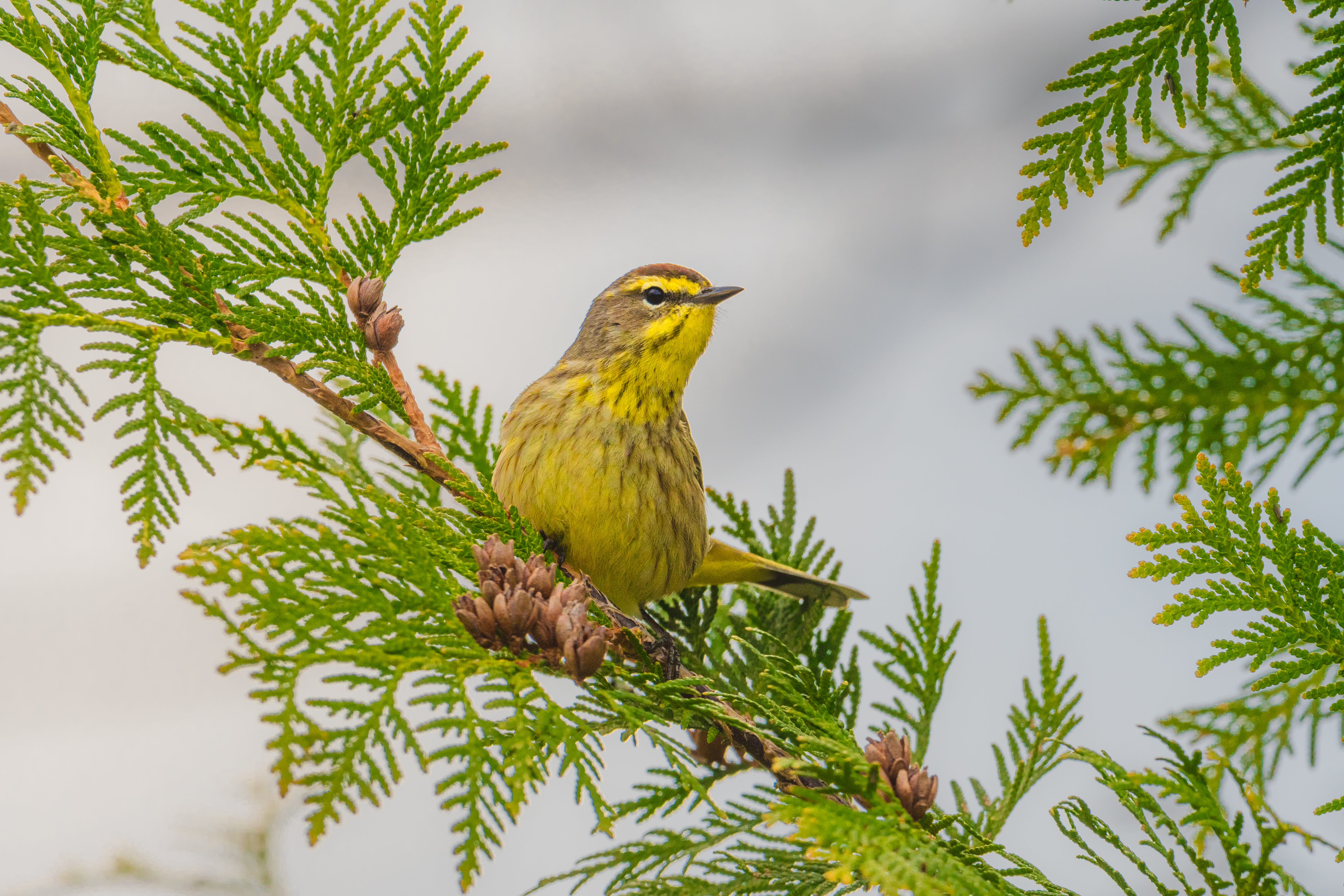Thousands of birds make Lighthouse West a stop on their migration journeys. Thanks to your support, more of this tip-of-the-peninsula bird paradise is protected and now connects to state land.
While conserving the land, water, and scenic character of Leelanau is our mission, it is your support that makes it possible.
At the end of 2022, we added 27 acres to the Lighthouse West Natural Area. Known for being a popular stop for migratory birds, the tip of Leelanau is filled with natural beauty. With help from donors like you and a longstanding relationship with landowners Bob and Betty Brenner, we were able to protect more of this wildlife hub.
The Brenners bought the property in 1968. They built a retirement home for the two of them where they live now, and their deck overlooks a breathtaking view of Lake Michigan. The rest of the acreage they left for Leelanau wilderness. Director of Natural Land Protection Matt Heiman started discussing conservation options with the Brenners in 2011. Matt and the Brenners kept in touch over the years, and when they decided to sell, they contacted the Conservancy first. Knowing the high ecological value of the parcel, combined with the potential to establish a publicly accessible trail connecting the two fragmented units of Leelanau State Park, we purchased the property.
“Working with Bob and Betty was a dream come true for a land protection professional. They love this land deeply and stewarded it for over 34 years with the utmost care to maintain the diverse, high-quality natural communities found here today. The Conservancy is honored to continue their legacy of love for the land.” – Matt Heiman
More than 150 migratory bird species visit Lighthouse West every spring. This unique location provides a serene and undisturbed habitat where migrating birds can rest and refuel during their long journey north. For many of the birds, the tip of Leelanau is their last stop before finding nesting grounds in the Upper Peninsula and Canada. In addition, several important species, such as rose breasted grosbeak, American redstart, Baltimore oriole, and eastern meadowlark, stay put once arriving and nest in the mesic northern hardwoods, forested dunes, northern cedar wetland, and old field succession habitats found at Lighthouse West.
The forested shoreline is a paradise for migrating birds. The forest, wetlands, and water provide all they need to eat, drink, and build nests. At Lighthouse West Natural Area you’ll find many species of birds, including several sparrows and warblers, scarlet tanagers, winter wrens, purple martin, and many other songbirds, shorebirds, and waterfowl species.
Speaking of waterfowl, they’re attracted to Lighthouse West because of the vernal pools. A vernal pool is a seasonal wetland that forms during the spring due to snowmelt or rainfall, and dries up later in the year. They’re characterized by their ability to hold water long enough for specialized species to complete their life cycles, including amphibians like frogs and salamanders. Vernal pools play a crucial role in maintaining biodiversity and provide a buffet of invertebrates and amphibians for waterfowl like ducks and great blue herons to eat.
A remarkable occurrence at the natural area is something called raptor kettling. The kettling conditions involve raptors taking the same route during migration to take advantage of the best warm winds (thermal updrafts) and other wind currents to help with flying. While the birds seem to be flocking together, their goals and behavior are still individual—they are not actually cooperating in any way other than to share airspace to take advantage of the best possible flight dynamics. This helps them save energy, conserve strength, and fly more efficiently. A raptor can be loosely defined as a bird of prey. Specifically, raptors actively hunt and eat other vertebrates, have hooked beaks, strong feet with sharp talons, and clear eyesight (think hawks, owls, eagles, and osprey). Raptors migrate alone, except in rare moments when they all take advantage of favorable migration conditions simultaneously. When a flock of raptors are flying together, it’s called a “kettle” or “kettling.” They’re not doing it on purpose, it just happens by rare chance, and those rare chances happen at Lighthouse West.
We’re particularly excited about this addition because it creates a protected wildlife corridor that connects Lighthouse West Natural Area to the Leelanau State Park. This means more room for our wildlife to roam, and more public access to quiet enjoyment of nature.
At the peninsula’s tip, where land meets water, nature thrives, and bird song fills the air, Lighthouse West is a testament to the power of conservation and the irreplaceable value of protecting these fragile ecosystems. It’s a place where both birds and humans can find solace and inspiration, joined in shared appreciation for the wonders of the natural world.







